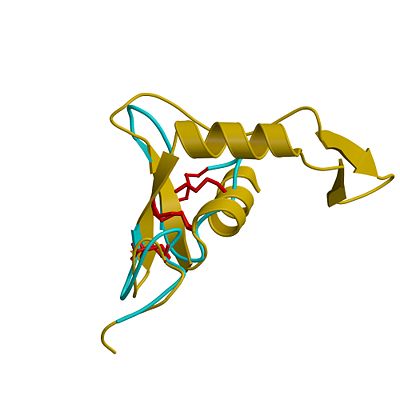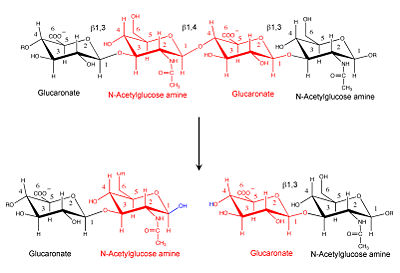Function
Hyaluronidase or hyaluronate lyase (HU) hydrolyzes complex carbohydrates such as hyaluronan which is part of the extracellular matrix. The hydrolysis increases tissue permeability[1].

Superposition of the EGF-like domain of hyaluronidase-1 (yellow) and the heparin-binding EGF-like growth factor (light blue). The three disulphide bonds of the EGF domains (highlighted red) exhibit the same pattern in the primary structure and are located in similar positions in the 3D structure.

Hyaluronidase cleaves the β1,4-glycosidic bond of the glycosaminoglycan hyaluronan Relevance
HU is used in medicine to speed drug delivery. Hyaluronic acid (HUA) is a popular dermal filler material.
Structural highlights
HU structure contains an . The active site is in a cleft in the N-terminal domain. Two HUA molecules are bound in the active site making contacts with some HU residues and multiple contacts with water molecules[2].
. Water molecules are shown as red spheres.
.
.
3D structures of hyaluronidase
Hyaluronidase 3D structures


